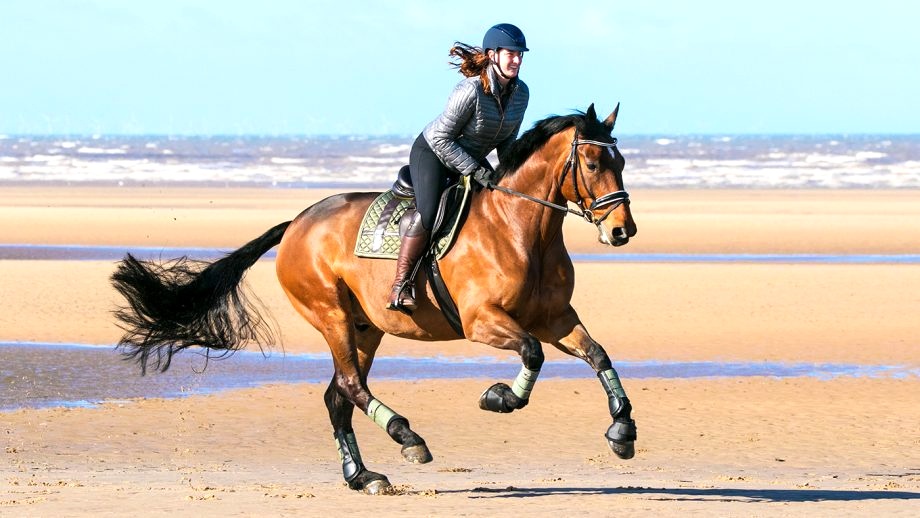A cresty neck is a condition that affects horses, causing their neck to become enlarged and abnormally curved. It is an unsightly condition that can also cause a horse pain and discomfort. If your horse is suffering from this issue, then it is important to find an effective way to get rid of it. This article will provide an overview of the condition and discuss the various ways that you can tackle it.
What is Cresty Neck?
Cresty neck is a condition that affects the horse’s neck. It is caused by an excessive accumulation of fat and/or muscle in the crest of the neck, resulting in an abnormally curved or bulging neck. The condition can cause discomfort and pain and can also be aesthetically displeasing. It is important to note that the condition is most common in horses that are overweight, so it is essential to keep your horse in good condition and prevent it from becoming overweight.
Causes of Cresty Neck
The most common cause of cresty neck is obesity or an excessive accumulation of fat in the neck. Other possible causes include:
• Poor conformation – Horses with poor conformation, such as those with a short neck or a narrow chest, may be more prone to developing cresty neck due to the extra strain that is placed on the neck when the horse moves.
• Genetics – Some horses are simply born with a predisposition to developing cresty neck.
• Nutrition – An imbalance in the horse’s diet can lead to an excess of fat in the neck area.
• Lack of exercise – A lack of exercise can lead to an accumulation of fat in the neck area.
• Stress – Stress can contribute to the development of cresty neck.
How to Diagnose Cresty Neck
In order to properly diagnose cresty neck, your veterinarian will need to perform a physical examination of your horse. They will be looking for any signs of an abnormal accumulation of fat or muscle in the neck area. They will also take into account the horse’s conformation and nutritional status.
Treating Cresty Neck
Once your veterinarian has confirmed that your horse has cresty neck, they will be able to advise you on how best to treat the condition. Treatment usually involves a combination of dietary changes, exercise, and other management techniques.
1. Diet and Nutrition
The first step in treating cresty neck is to address any nutritional deficiencies or imbalances your horse may have. Your veterinarian will advise you on the best diet for your horse and may also recommend supplements. A diet rich in vitamins and minerals is important for maintaining muscle tone and helping to reduce fat deposits.
2. Exercise
Regular exercise is an important part of treating cresty neck. Exercise helps to maintain muscle tone and can also help to reduce fat deposits. Depending on your horse’s age and health, your veterinarian may recommend some specific exercises for your horse.
3. Massage
Massage can be beneficial for horses suffering from cresty neck. Massage helps to increase blood flow to the area, which can help to reduce swelling and discomfort. Your veterinarian may be able to recommend a qualified massage therapist who can provide your horse with therapeutic massages.
4. Proper Conformation
If your horse has poor conformation, then it is important to work with a qualified farrier or a veterinarian to make sure that the horse’s hooves and feet are correctly aligned. This will help to reduce the strain that is placed on the neck and may help to reduce the severity of the condition.
5. Proper Management
It is important to practice proper management when dealing with cresty neck. This includes making sure that your horse is not overworked or stressed and that they are receiving the proper nutrition and exercise.
6. Surgery
In some cases, surgery may be necessary to treat cresty neck. Surgery can help to reduce the amount of fat or muscle in the neck area, allowing the horse to move more freely and reducing any discomfort or pain. Surgery should only be considered as a last resort, however, and should only be performed by a qualified veterinarian.
7. Supplements
Supplements may be recommended by your veterinarian to help reduce the accumulation of fat or muscle in the neck area. Supplements can provide essential vitamins and minerals that are important for maintaining muscle tone and reducing fat deposits.
8. Treating Pain
If your horse is in pain due to cresty neck, then your veterinarian may recommend some pain relief medications. These medications can help to reduce the discomfort and pain that your horse is experiencing.
9. Prevention
The best way to treat cresty neck is to prevent it from happening in the first place. This means making sure that your horse is kept in good condition and that they are receiving the proper nutrition and exercise. It is also important to watch out for signs of stress and to make sure that your horse is not overworked.
10. Consulting a Vet
If you think that your horse may be suffering from cresty neck, then it is important to consult a veterinarian. They will be able to diagnose the condition and advise you on the best course of treatment.
Conclusion
Cresty neck is an unsightly condition that can cause discomfort and pain for your horse. If your horse is suffering from this condition, then it is important to consult a veterinarian and to take steps to treat it. Treatment usually involves a combination of dietary changes, exercise, and other management techniques. It is also important to practice prevention to reduce the chances of the condition occurring in the first place.

